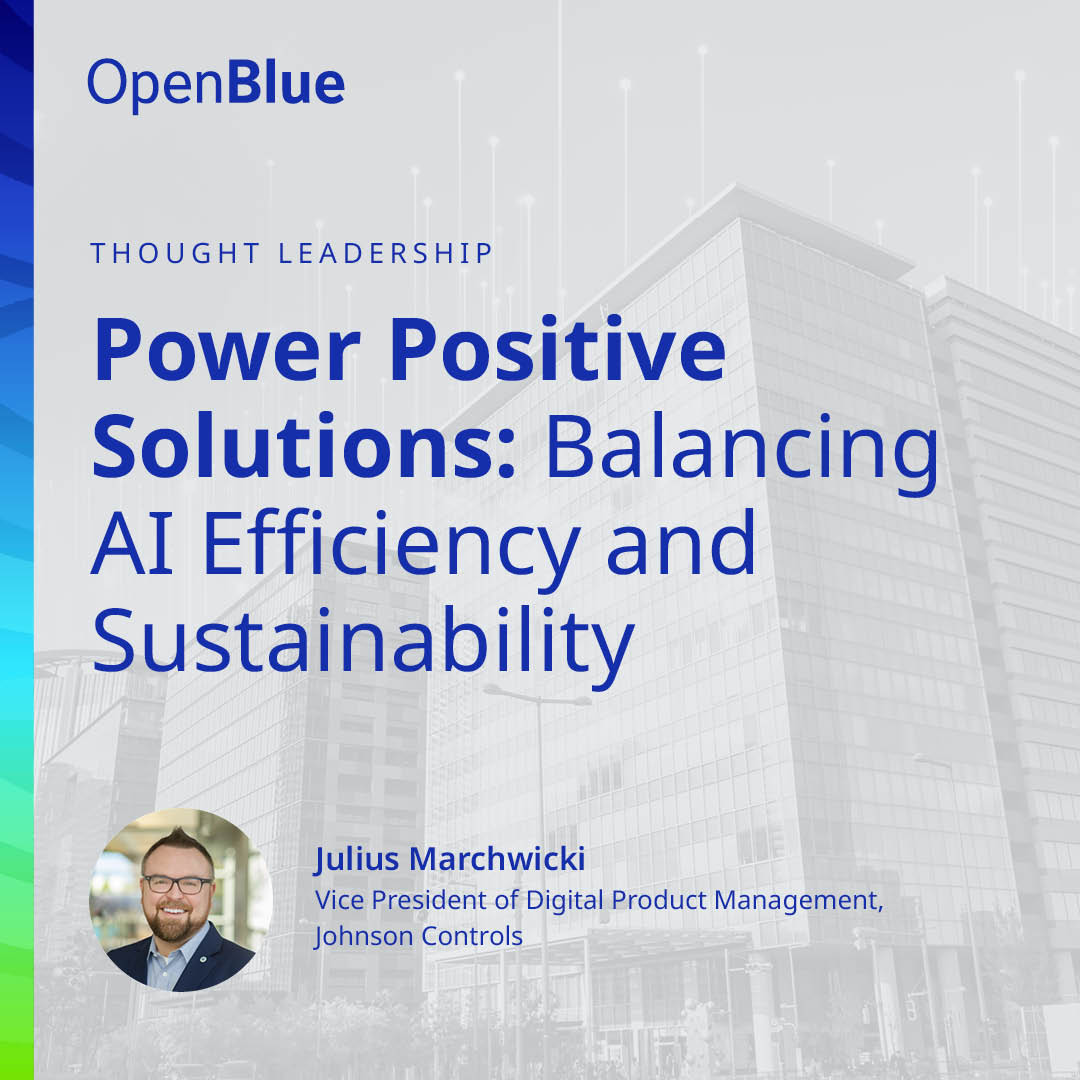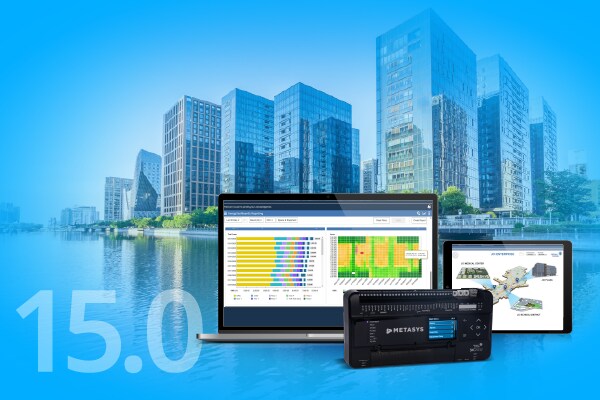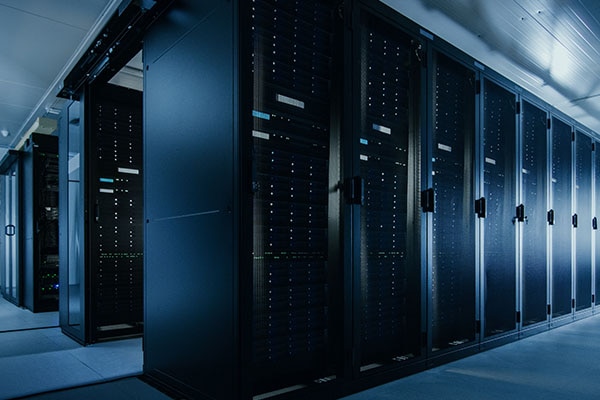- Johnson Controls
- Insights
- Power Positive Solutions
Power Positive Solutions: Balancing AI Efficiency and Sustainability
Integrating sustainable practices into business operations - including the strategic use of artificial intelligence - can significantly lower carbon emissions and strengthen long-term resilience.
In a recent feature by Facility Exec Magazine, Julius Marchwicki, Vice President of Digital Product Management at Johnson Controls, emphasised the pressing need for building owners to embrace environmentally responsible technologies. These solutions not only boost energy efficiency but also enhance profitability and reduce environmental impact.
Facility Executive Magazine is a publication that focuses on facilities management and building operations. It serves as a resource for industry professionals, covering topics like building design, construction, building envelopes, workplace interiors, security, maintenance, technology, and sustainability.
Take the first step with us today and learn more about AI driven solutions that balance energy efficiency and sustainability.
Read the Full Article
On average, 30% of the energy used in commercial buildings is wasted
(U.S. Environmental Protection Agency)
The tools to tackle this challenge are already at our disposal - a powerful combination of energy efficiency, electrification, and digitalisation.
Embracing sustainable business strategies, including the integration of AI, goes far beyond regulatory compliance or corporate social responsibility. It’s a sound commercial decision. Intelligent, well-planned cost reductions not only help cut emissions and support environmental goals, but also contribute to long-term business strength and sustainability.
 The Power of AI
The Power of AI
The future of building management is being shaped by data, digital platforms, and artificial intelligence. By collecting insights on factors such as energy tariffs, outdoor climate, indoor air quality, and occupancy patterns, buildings can achieve substantial reductions in both operational costs and carbon emissions.
Digital technologies offer a clear, real-time view of building performance, enabling facilities teams to make informed decisions and fine-tune operations. AI enhances this further by identifying unusual energy usage patterns and providing actionable guidance - often intervening automatically to maintain optimal system performance.
Advanced AI analytics adapt to their environments, reducing false alerts and freeing up facility managers to concentrate on strategic priorities. In larger estates - such as hospitals or educational campuses - AI’s capacity to process vast datasets streamlines decision-making, boosts efficiency, and supports sustainability objectives.
 AI in Action
AI in Action
Stanford University in the US has recently transformed its energy infrastructure with the help of Johnson Controls’ OpenBlue technologies, delivering impressive results. At the heart of this transformation is a “model predictive control” system - an advanced energy management platform that continuously analyses energy usage and offers recommendations to optimise performance.
This intelligent system can function autonomously or assist human operators by providing data-driven insights for decision-making.
Through this innovative approach, Stanford successfully achieved its ambitious goals for energy efficiency and carbon neutrality, with measurable outcomes including:
- A 6% increase in system efficiency
- Reduced peak in energy demand by 17%
- Saving nearly £400,000 annually.
- Reduced greenhouse gas emissions by 68%
- Reduced domestic water usage by 15%
 The AI Paradox
The AI Paradox
While AI contributes significantly to improving energy efficiency and operational effectiveness, certain models can be energy-intensive to develop and run. However, recent innovations have led to more efficient training processes, offering promising reductions in both time and energy consumption.
Specialised cooling technologies and intelligent building management systems can further enhance equipment performance, typically lowering annual energy usage by between 5% and 15%.
By combining AI capabilities with human insight, organisations can make smarter, data-informed decisions — creating a powerful synergy that advances business objectives. Now is the time to take action: to meet sustainability targets, elevate operational standards, and secure long-term success.
Take the first step with us today and learn more about AI driven solutions that balance energy efficiency and sustainability
























.jpg?la=en&h=320&w=720&hash=244C75B74F0F77521D56164450973BCD)







































